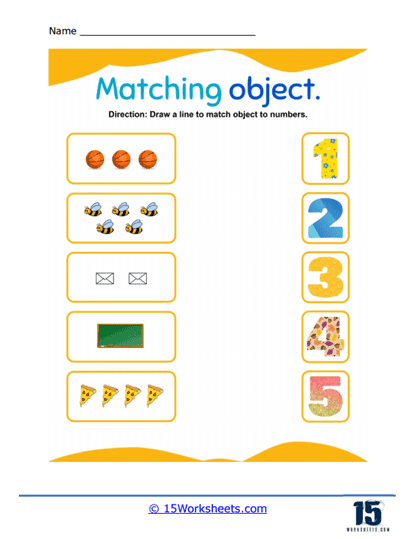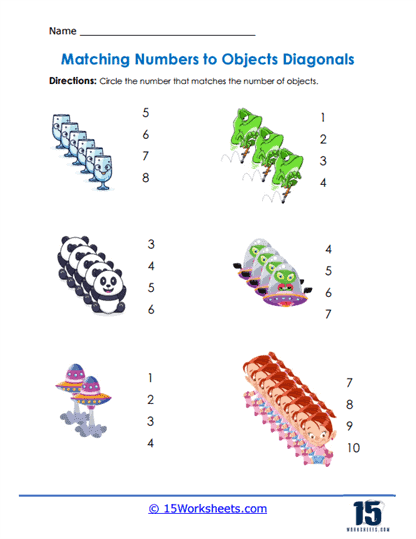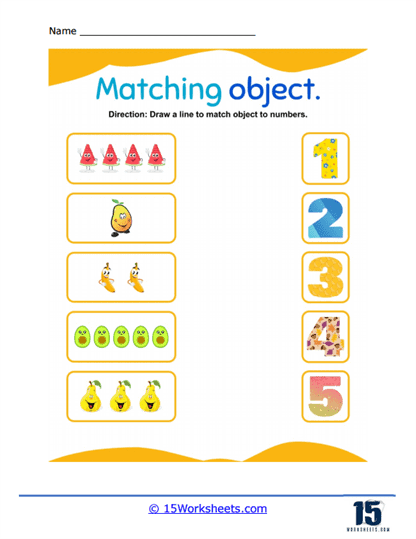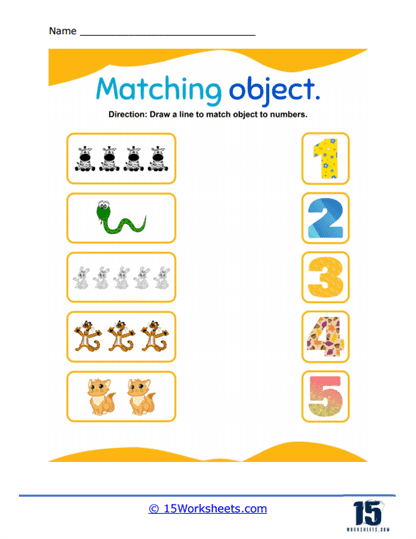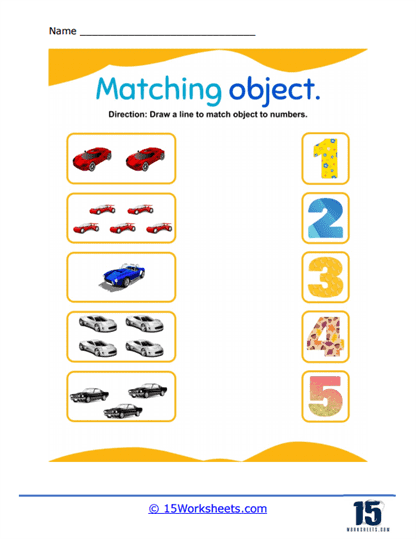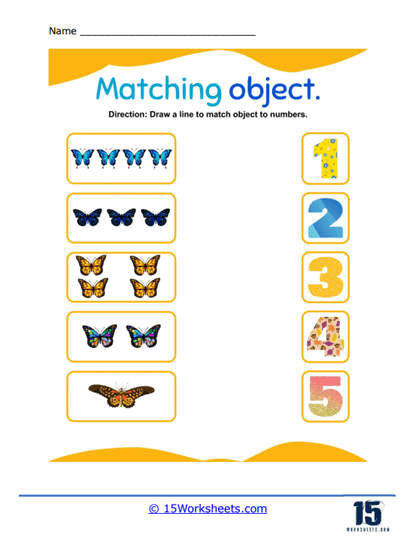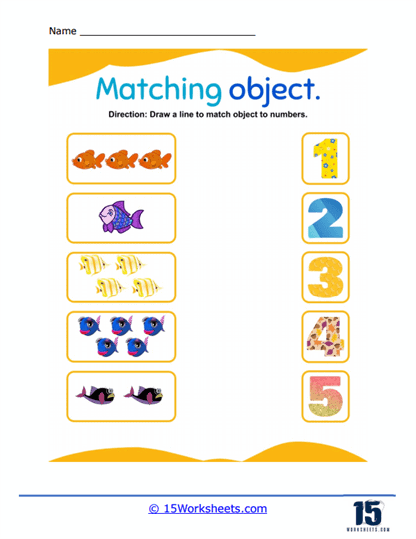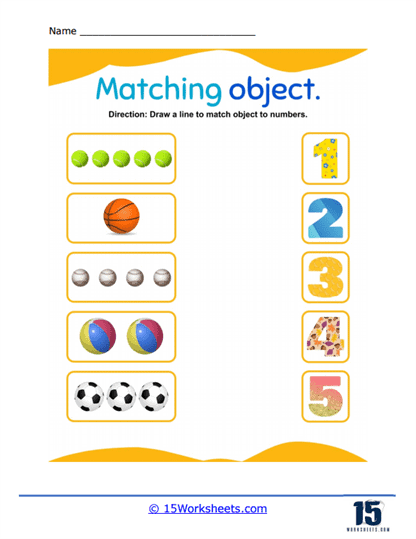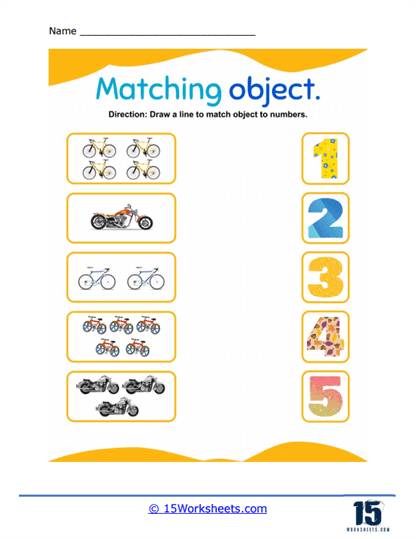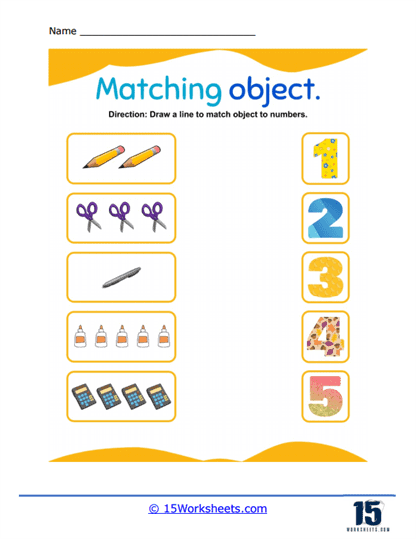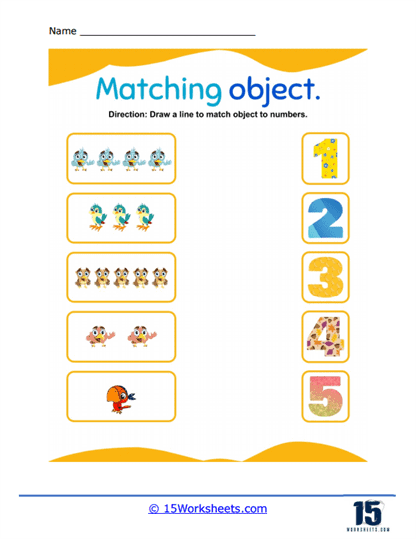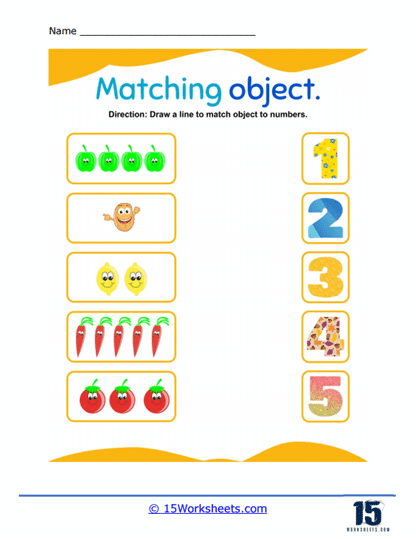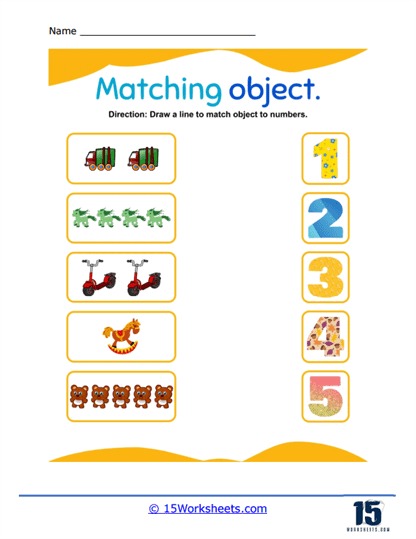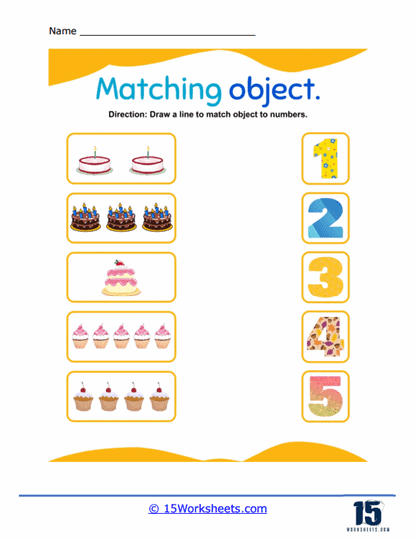Matching Objects to Numbers Worksheets
What Are Matching Objects to Numbers Worksheets?
The goal of this worksheets is to help student improve their ability to match a given set of objects to a corresponding number. These worksheets feature a series of objects or pictures, and children are asked to match the objects or pictures to the correct number.
Matching objects to numbers worksheets can come in many different forms, such as fill-in-the-blank exercises, matching games, and puzzles. Some worksheets might ask children to match the number of objects to the corresponding number, while others might ask them to match the picture of an object to the correct number.
Matching objects to numbers helps you develop a strong understanding of numerical concepts. When you can connect a specific number to a physical object or a group of objects, it becomes easier to grasp the idea of quantity and how numbers represent amounts. This skill lays the foundation for more advanced mathematical concepts you’ll encounter in the future.
Matching objects to numbers allows you to visualize numbers in a tangible way. It helps you create mental images and associations between the abstract concept of numbers and concrete objects. This visualization helps in problem-solving and understanding mathematical relationships, as you can picture the quantity represented by a number more easily.
This skill also has practical applications in daily life. It helps you make sense of quantities when measuring, organizing, or comparing objects. For instance, if you want to distribute five candies to three friends, matching objects to numbers helps you ensure everyone gets the right amount.
How to Match Groups Objects to Numbers
Matching groups of objects to numbers is an important skill that helps develop number sense, one-to-one correspondence, and counting abilities. Here are some strategies and activities to practice matching groups of objects to numbers:
Use Manipulatives – Provide a variety of manipulatives, such as counters, blocks, beads, or buttons, to create groups of objects. Manipulatives can be especially helpful for young learners, as they provide a tangible representation of numbers and help develop fine motor skills.
Number Cards – Create or obtain number cards, which display numbers along with their corresponding written or visual representation. Encourage learners to count the objects in a group and find the matching number card.
Sorting and Counting Activity – Set up a sorting and counting activity by providing a collection of objects and containers or spaces labeled with numbers. Have learners sort the objects into the appropriate container or space based on the number of items in each group.
Draw and Match – Provide paper and drawing materials for learners to draw groups of objects and write the corresponding number next to each group. This activity helps reinforce the connection between the visual representation of a group of objects and its corresponding number.
Memory or Matching Game – Create a memory or matching game by placing pairs of cards face down on a table – one card showing a group of objects and the other displaying the corresponding number. Have learners turn over two cards at a time, trying to find matching pairs.
Interactive Worksheets – Use worksheets that require learners to count objects and match them to their corresponding numbers. These can include activities like circling groups of objects that match a specific number, drawing lines to connect matching pairs, or filling in missing numbers.
Use Everyday Objects – Incorporate everyday objects in your learning activities, such as counting and matching the number of forks or spoons in a drawer, toys on a shelf, or items of clothing in a closet.
Number Line Activity – Create a number line on the floor or a table using paper or sticky notes. Have learners place groups of objects on the number line according to the number of items in each group, helping them visualize the relationship between groups of objects and numbers.
Incorporate Technology – Utilize educational apps or online games that involve counting and matching groups of objects to numbers. These tools can provide engaging and interactive practice opportunities for learners.
Encourage Peer Interaction – Engage learners in cooperative learning activities where they can work together to count and match groups of objects to numbers. This can promote communication, teamwork, and learning from peers.
By using these strategies and activities, learners can practice matching groups of objects to numbers, strengthening their number sense, one-to-one correspondence, and counting abilities.

